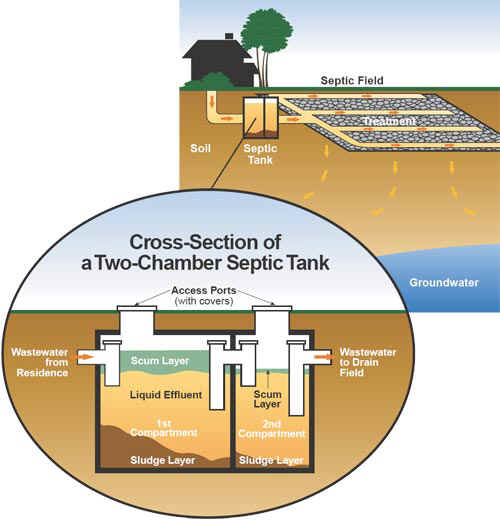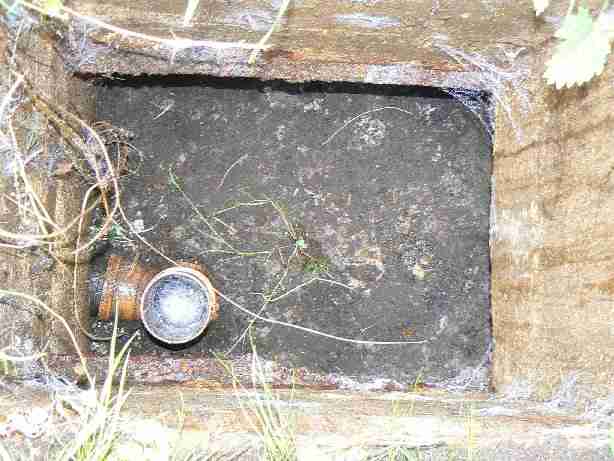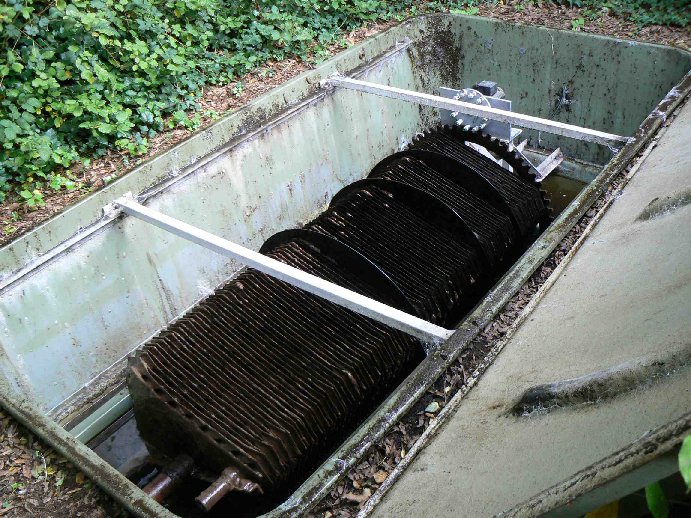
Septic tank systems are an effective, economical way of
treating domestic effluent. They consist of two main components: a
watertight, underground tank (or tanks), into which raw sewage is fed, and
(normally) a drainage field to which wastewater is released. Direct
discharge from the tank to a ditch or watercourse should not occur (however
in Northern Ireland and Scotland, the use of a perforated pipe which drains
to a waterway is allowed under certain conditions).
The tank provides suitable conditions for the settlement,
storage and partial decomposition of solids, which need to be removed from
time to time. The drainage field is critical for protecting the environment
from pollution and removing potentially harmful impurities. Most modern
tanks are constructed of glass fibre or thermoplastics. Older tanks were
usually constructed with brick or concrete.
Septic tank systems require minimal maintenance, but they
rely on bacteriological action and if not functioning correctly, there can
be problems with odours, surface flooding, contamination and associated
health risks.
What is a cesspit?
A cesspit is merely a holding tank for waste - no treatment is undertaken.
These tanks need very regular emptying, dependant upon the number of
occupiers and usage.
How does a septic tank work?
The primary purpose of the tank is to separate the solids from the liquids
and to help break down contaminants. There are usually three layers in the
tank: a scum layer of floating solids. the liquid sewage from which solids
are settled out. a bottom sludge layer which is partially treated by
bacteria. The wastewater passes from the tank to the drainage field, often
via a distribution/sampling chamber.
The drainage field typically consists of a system of
sub-surface perforated pipes or a soakaway, which allows the liquid to drain
into the surrounding soil. To function properly, it relies on adequate soil
drainage and good contact being maintained between the liquid, air and
bacteria the subsoil, which break down and purify the effluent. It is
better to use a network of sub-surface perforated pipes, or alternatives
such as constructed reed beds, rather than soakaways. The former methods
maximise contact with the soil, or plants, and aid the natural breakdown of
the waste. But remember, septic tank systems will only operate properly if
tanks are regularly and competently de-sludged.
 Maintenance
Maintenance
Septic tank systems require little maintenance, but they should be emptied
once a year (samll treatment plants usually require more regular attention). This de-sludging is important to prevent solids entering the
drainage field and causing blockages. You will know the tank needs emptying
too late if sludge levels are high, the drainage field floods, the drain
backs-up or it smells. A regular look at your system will help you learn how
it works, but take care when you do so. A well-run system will develop a
surface crust, full of earthworms and will not be smelly!
The drainage field should also be checked for sogginess or
flooding this indicates inadequate drainage or a clogged system. When the
tank is de-sludged, ensure the operator: pumps out all of the contents,
including the sludge (a small crust may be left for reseeding- but no more).
uses the access cover, not the inspection ports. does not damage the
internal pipework or breather vents and leaves the inlet pipe clear and the
covers in a safe condition. When choosing a de-sludging contractor, check
that the sludge will be disposed of responsibly and safely, preferably to
the local sewage treatment works.
The underground drainage field is the weakest part of the
system and once blocked, often the only solution is excavate and repair. Old
systems may be so badly silted and infested with roots that replacement is
the only option. This can be expensive and very disruptive if garden areas
need to be disturbed. Typical indicators of problems with your system are
slowly draining sinks, toilets, baths etc. Tank covers lifted by overflowing
solids, backing up of sewage at the inlet, surface flooding downstream of
the tank and nettles and vigorous plant growth downstream. Ground movement
near the tank or drainage field, polluted water in ditch or watercourse and
a smell of sewage in the area.
Your responsibilities
A septic tank system which does not work can pollute water or land, cause a
nuisance or smell, and be a possible hazard to children and wildlife. As the
owner or occupier of a property with a septic tank system, you have a legal
responsibility to ensure that it functions properly. Environmental
Regulators and The Local Authority have the power to prosecute offenders and
can serve notice to ensure that remedial action is taken to improve
unsatisfactory systems.
Purchasing a property
If you are considering buying a property with a septic tank
system, ensure that the drainage field is inspected prior to signing
contracts and ask the householder if a maintenance log is available. With
new houses which have a warranty, make sure that it covers the system. With
other properties, a site inspection which includes the inlet drainage, the
tank and the drainage field should be carried out by a competent surveyor.
Your building society or bank valuation report will not cover this.
Most domestic systems do not require registartion or a discharge certificate from the
Environment Agency unless they are situated in a sensitive area, as defined by the general binding rules.
 Useful advice
Useful advice
─ Drain all the wastewater from your home into the system as
any of these waters may contain disease-causing germs or environmental
pollutants, but not rainwater.
─ Use bleaches, disinfectants, sterilisers or germicides
sparingly, as they could kill the bacteria which help digest the waste.
Normal domestic cleaners are biodegradable and should not impair the
function of the tank.
─ Inspect the system regularly, including water levels in the
distribution chamber and the drainage field.
─ De-sludge the tank at least once a year.
─ Act immediately if you find a blockage or any sign of
pollution do not allow effluent to collect on the ground surface.
─ Keep records of inspections (e.g. water levels), de-sludging
activities and any maintenance undertaken on permanent log sheets.
─ Ensure that all covers can be secured, but removed when
necessary.
─ Ensure that air vents are not blocked.
─ Ensure that the drainage field is protected do not dig in
it, drive over it, plant anything over or near it except grass, or cover it
with a hard surface such as concrete or asphalt.
─ Don't dispose of rags, nappies, sanitary items, plastic or other large
solids in the tank they will cause blockage and backing-up.
─ Don't pour paints, solvents, hazardous chemicals,
pesticides, fats, oils or heavy grease and engine oil down the drains.
─ Don't use caustic solutions to unblock drains use boiling
water or drain rods instead.
─ Don't allow rainwater to drain into the tank or surface water to flood the
drainage field. Flooding will sweep solids through the tank and inhibit
treatment in the drainage field.
─ Don't ever enter a septic tank toxic gases are produced by the natural
treatment process.
 Download a leaflet giving information on general binding rules.
Download a leaflet giving information on general binding rules.
 Download a table giving showing the general binding rules.
Download a table giving showing the general binding rules.

 Useful advice
Useful advice